| Onion chives on the left; garlic chives on the right. Different cucumber types require different harvesting methods. Different types of lettuces offer year-round salads and months of harvesting from the same plants. Cantaloupe on the left is in a pantyhose to foil pests; it'll loosen from its stem when it's ripe. Watermelon on the right is ripe when its bottom spot turns yellow and it sounds hollow with a palm or knuckle thump. Peppers - sweet on the left and hot on the right - offer a range of heat and flavors. Summer squashes are harvested when they're young; winter squashes are harvested at the end of the season when they've developed their hard cuticle skins for long storage. So many kinds of tomatoes, but the reason we're gardening in the first place! | While each of us has our flavor preferences, perhaps initiated during our childhoods and further modified as we grew older and began tasting our way through farmers markets and our own and friends’ gardens. A perfect example is tomatoes. Tomato flavor is a combination of sweet and acid, with the perfect balance very much an individual preference. Gardeners love to share their favorites, and over the years I’ve found some friends’ enthusiastic recommendations to be bland or too sweet or too acid to my taste. I’ve always attributed this to distinctions in garden soil and water and growing techniques and microclimates – similar to differing results of exactly the same brownie recipe. Here are some clues that I’ve developed to the optimum time to harvest produce throughout the year. When you’re first growing something, I recommend harvesting at many stages as the vegetable or fruit matures so you can determine when YOU like it best. After all, you’ve devoted time and labor and resources to growing your own, so you should be the determiner of which is the best time to harvest the fruits of your labors! Artichokes These immature flowerbuds should be fully rounded, with the bract scales barely extending outward. Cut the stem about one inch underneath the globe. First globes will emerge from the center stalk and be the largest. Each successively smaller globe will emerge from the nodes of the secondary and then tertiary branches. The last ones may be too small to harvest, so let them develop into their purple blooms to enjoy them as ornamentals in the garden. Asparagus Whether grown in your garden starting with seed or transplants, wait to harvest the first shoots until they’re the size of your little finger – and then, pick only a couple from each plant those first several years. Shoots should be about 8” long, about 1/2” wide, and not have any of the flower buds at the tips beginning to open. You want to let additional shoots continue their development to make the root stronger and more productive since they can live up to about 15 years. In succeeding years, cut only shoots that are about half an inch wide, and be careful to cut just below the soil surface so you don’t damage the root. Basil Repeatedly pluck young foliage leaves, including stems but leaving the bottom couple of nodes and still-vibrant mature leaves to continue photosynthesis until new young sprouts emerge. Remove individual leaves from the stems, and save stems for the compost pile. Use leaves fresh or dried or frozen in ice cubes or crushed with olive oil. Of the many varieties, you’ll determine which you prefer to use culinarily or ornamentally. Beans For fresh use, pick pods when seeds are barely visible. For dry use, wait until the seeds are fully developed in the pod, and the pod is crispy dry. Beets Pull globes when they’re between 1-2” wide, and use the tender young foliage raw or cooked. Harvest foliage greens anytime. However, if greens are harvested too frequently before the globe is harvested, there’ll be less energy for the globe to develop fully, so use some plants for repeated foliage harvest, and leave others to develop fully into globes, using their foliage only when harvesting the entire plant. Bok Choy, Tatsoi Pick outer leaves, leaving several innermost ones to continue developing for months' long harvest. Even once the plant flowers and elongates its stem to bolt and set seed, the flesh is sweet and tender. Boysenberry In clusters of 3 berries, the center berry matures first. When berries turn from reddish-purple to dark purple, and from glossy to matte, they’re almost fully ripe. Gently tickle them from underneath the cluster -- if they’re ripe they’ll fall into the palm of your hand. If you have to tug them, they’re not quite ripe. Broccoli Cut broccoli when it’s deep green with small, tightly packed buds. When cutting main-head types, more smaller bite-size headlets will develop at side nodes for months of continuous harvest. “Sprouting” varieties developno main head but instead many small bite-size shoots for extensive long harvests. Yellow blossoms appearing on the elongated stems are also edible when stems are cut short (the longer stems become too woody to eat). Flowers that are allowed to barely mature into inch-long green seed pods can be harvested and tossed into a salad for a raw bite of spiciness. Cabbage Allow these single-harvest plants to get as large as possible before cutting them when they’re still firm. However, even if the cabbage head splits and the bloom stalk bursts through the top, the cabbage is still fully tender and sweet. Carrots Different varieties mature into different shapes both in length and width as well as at different rates over a couple of months’ time. When a thick mat of foliage stems has developed, gently brush away the soil from the tops of the carrots that are about 1/2 inch wide and pull up a couple to see whether they’ve developed enough, taste a couple to see whether more are ripe enoough. After harvesting the ones you want, water the bed to resettle the remaining carrots so they continue to grow. If carrots taste “turpentiney”, they haven’t been watered sufficiently to dilute that natural flavor component. Cauliflower Cut this one-time harvest at its base when the curds are still tight. Once curds start to open up - "ricing" since they look like grains of rice - or when the color of a normally white variety turns creamy yellow - the flesh is still tender and succulent. Celery Pull (don’t cut) outer stalks, tearing them from the base of the plant. Cutting will leave raw edges that will decay and perhaps spread to the plant. Keep plants well watered so foliage remains turgid. Chard Snap off (don’t cut) outer stalks, leaving several inner stalks to further develop for continuous harvest. If the outermost foliage is too mature, toss it into the compost pile. Chives Cut stems an inch above the soil, and water the bed to encourage additional stems to sprout. Onion chives have round hollow stems, pink flowers, smell like onions, and are delicate to grow. Garlic chives have flat solid stems, white flowers, smell like garlic, and are very drought tolerant to grow. Cilantro Cut stems an inch above the soil, and water to encourage additional stems to sprout. Best grown in cool weather since they bolt (go to seed) during warm weather. Cucumber Five types have different maturity determinants. “Armenian” are 18-24” long, ribbed, light green, seedless, and don’t need to be peeled. “Salad” type are 7-9” long, dark green, and picked full but not round. “Dill” for canning are 4” long and almost fully round. “Gherkin” are 2-3 inches long and concave. “Lemon” are 2” round and chartreuse to yellow. If cukes are curled instead of straight, they’ve not been watered sufficiently and may taste bitter. Garlic Like with beets, both foliage and globe can be harvested, but it’s best to utilize separate plants for each distinct use – some for foliage but other plants for fully-developed globes. Harvest greens by snipping the foliage an inch above the globe; this will gradually deplete the globe of its energy. To harvest the mature globe, stop watering and let the foliage die back naturally in May and June, then pull the globe and let it dry on a rack out of the sun or braided with others until the foliage is crispy dry. This aging promotes the formation of the protective papery sheaths around each of the cloves for longer storage. Kale Like chard, snap off the outer leaf stems, and toss too-mature foliage into the compost pile. New shoots will develop for months more continuous harvest. Of all of the varieties, I’ve found the Dinosaur or Lacinato Kale (Brassica oleracea var. palmifolia) to be the most resistant to bolting (going to seed) through the hot summer. Kohlrabi Leaves and globe are both edible, however its best to peel the globe for its tender sweet interior. For its most succulent, pull the plant when the globe is about 2 inches wide. If allowed to grow larger, flesh becomes tough, woody, and bitter, especially during summer weather. Best to grow during cool weather. Lettuce Pull up plants of tight-head varieties when they’ve attained their mature size. For leaf-head varieties, pull the outer leaves and let the four innermost leaves to continue developing for months more continuous harvest. Melons Different types have distinct clues to harvest them at their best. Cantaloupes have tan netting, a sweet aroma, and easily slip away from their stems. Honeydews are creamy yellow rather than green, a waxy rind, and give a bit at the blossom end. Casabas are bright, buttery yellow, the whole fruit will feel heavy, and give slightly at their base end. Watermelons sound hollow when slapped with the palm of your hand or knocked with your knuckles and the white spot where they rested on the ground has turned yellow. Onions Green onions are harvested fresh at whatever size you’d like. Mature dried globe onions, like garlic, are allowed to dry out in May and June and then gathered to dry or be braided and stored out of direct sun to enable the papery outer sheath to develop for longer storage. If necks are thick, use these first as they won’t keep long. Parsley As with cilantro, cut stems an inch above the soil, and water to encourage additional stems to sprout. Peas Both edible-pod and non-edible-pod types can be harvested fresh or allowed to mature completely until crispy dry. Harvest flat edible-pod types – snow peas like Oregon Sugar Pod - when the peas in the thin bright green pod are barely visible. Harvest filled edible-pod types – snap peas like Super Snap - when the peas rounded but not too firm in the outer bright green pod. Harvest non-edible-pod types – shelling peas like Green Arrow - when peas round and full in their shiny bright green pod. Peas that are harvested too late will taste starchy. All these types can be allowed to mature completely until they’re crispy dry to be saved and used later as dried peas. Pepper Whether “sweet” or “hot”, pick when they’re to your taste preference. Green peppers are less mature, and colored peppers are more mature and flavorful. Keep well watered so their fleshy walls are thick and flavorful. Potato Let foliage dry and die back naturally – this indicates that the potatoes under the plant are beginning to mature and form their protective skins for longer storage. Stop watering. A month or so later, carefully lift soil to reveal harvestable potatoes. The earlier your harvest, the more water will be retained by the potatoes, so cook them in thin slices instead of baking (they’ll turn into a “rock”). Keep them stored in the soil with no irrigation, digging a few at a time as you use them. Pumpkin Wait until the rinds are completely hard and can’t be punctured by a fingernail. This is their protection so they can be stored for a long time without spoiling. Radish Shapes range from round to elongated and are harvestable at any stage after they’re about 1 inch in width. They bolt (go to seed) quickly with warm weather. Like with broccoli, flowers that are allowed to barely mature into inch-long green seed pods can be harvested and tossed into a salad for a raw bite of spiciness. Spinach Like lettuce, pick individual outer leaves, allowing several interior leaves to continue growing for continuous harvest. Squash Summer squash like yellow crookneck, scallopini, and zucchini are harvested when they’re only a couple of inches thick or long to retain their full flavor. Pick them on the small side since they’re notorious for doubling or tripling in size over a weekend. Winter squash, like pumpkins, are harvested when the rinds are completely hard and can’t be punctured by a fingernail since this affords them long storage. Harvest squash blossoms early in the morning and prepare immediately before they droop. Tomato Tomatoes ripen from the bottom up and from the inside out. Ripe and flavorful tomatoes will be fully-colored and give slightly when pressed gently in the palm of your hand. Ideally, you’ll get a good three or four weeks’ harvest from the first to the last fruits of “determinate” varieties, and all summer long through cool fall weather for “indeterminate” tomatoes. Once harvested, it’s critical to not refrigerate tomatoes unless they’ve been cut, since the chill will damage their cell structure, resulting in a mushy texture and diminished fragrance and flavor. Choosing to harvest colored tomatoes when they’re still fully green or “breakers” that are barely turning color is a great way to salvage end-of-the-season fruits for fried green tomato sandwiches -- but just setting them on the kitchen counter, they’ll never attain their full potential flavor. |
|
2 Comments
|
Categories |














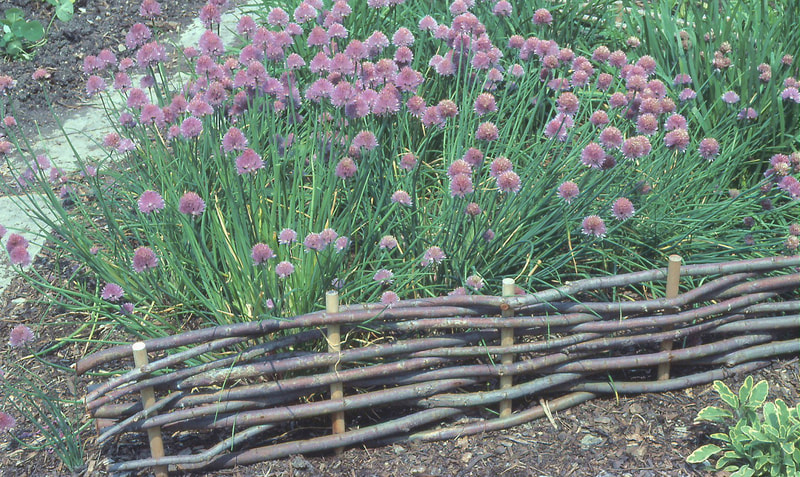









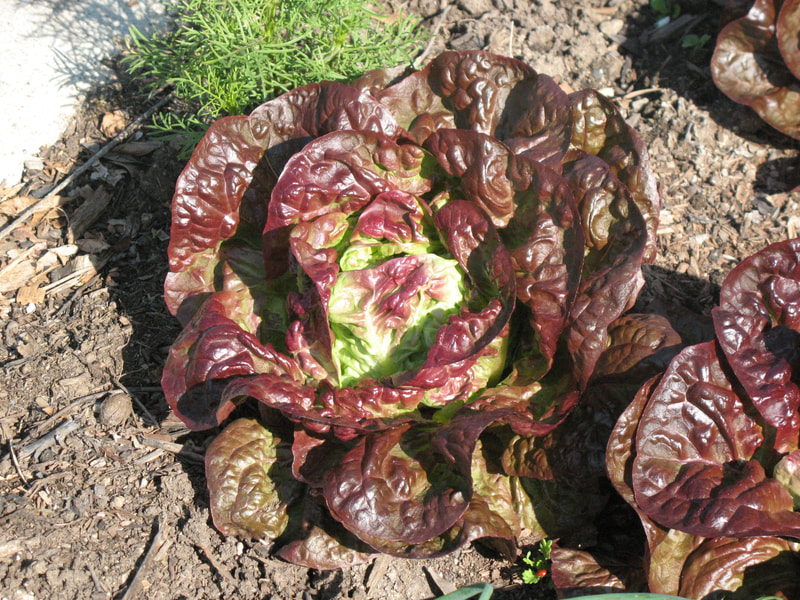
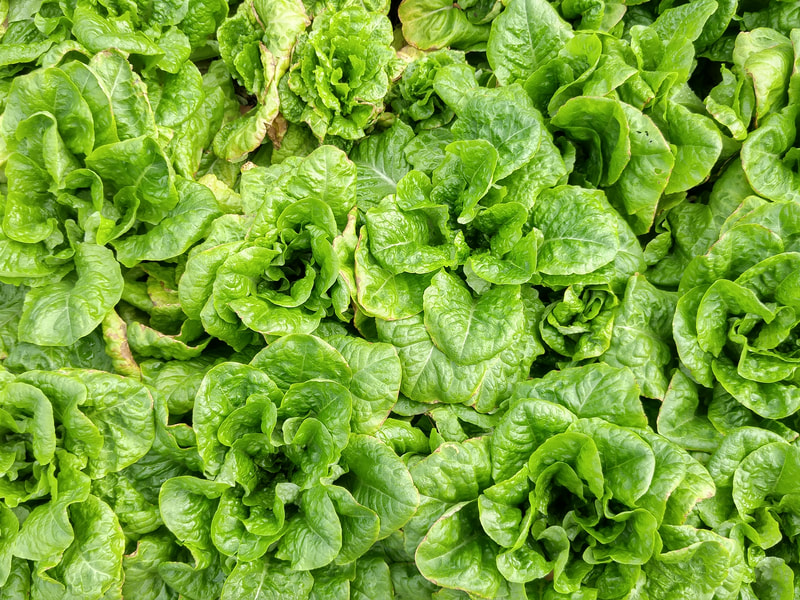


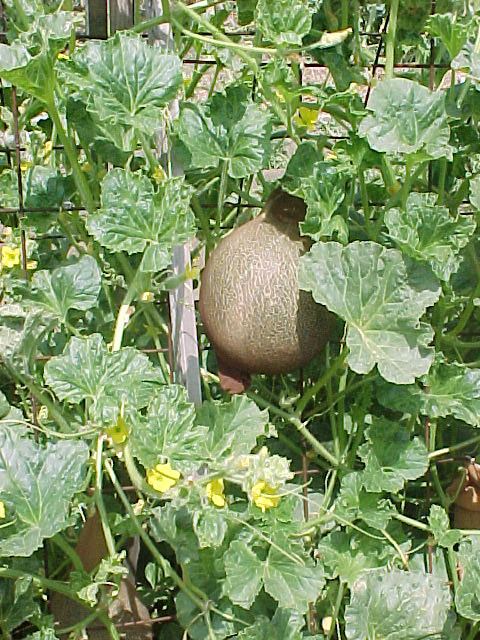
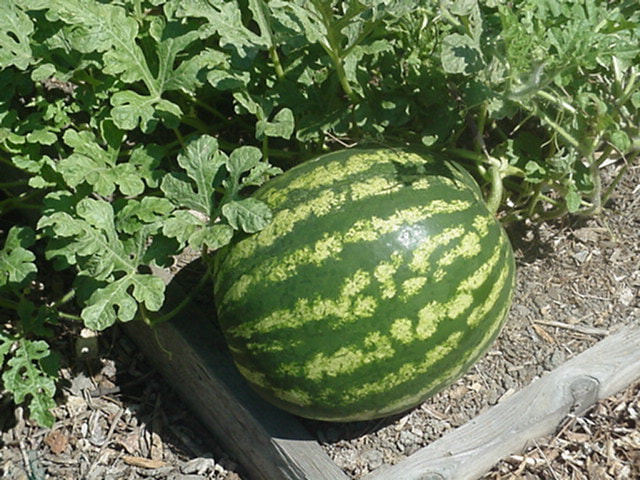


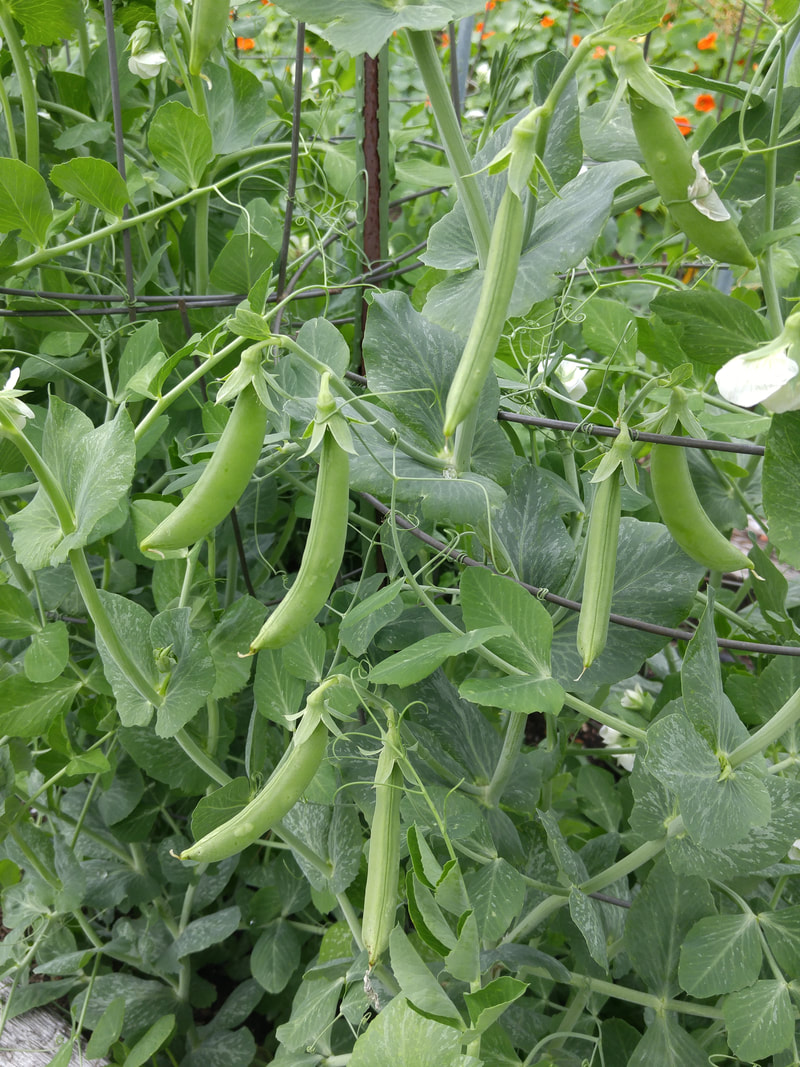
















 RSS Feed
RSS Feed